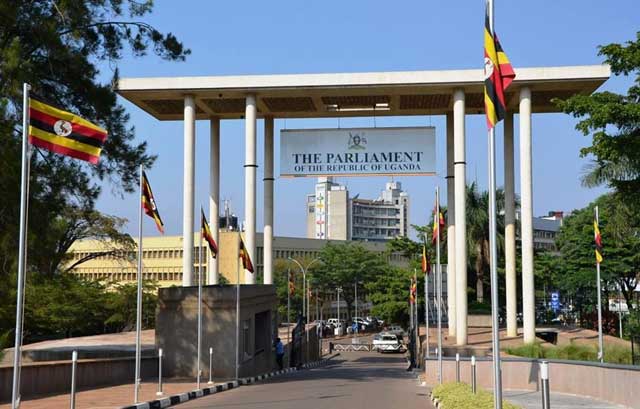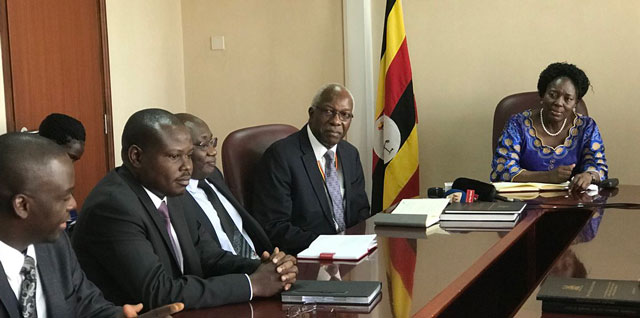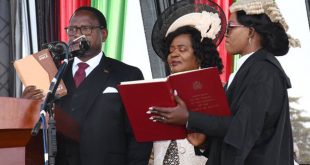
✳ Sh1.39 trillion for Lubowa Hospital
✳ Sh768 billion for Rwekunye-Apac-Lira-Acholibur Road
✳ Sh402.5 bn Muyembe-Nakapiripirit Road
✳ sh380 bn classified Defense ministry
Kampala, Uganda | THE INDEPENDENT | Uganda’s Parliament approved loans to the tune of sh6.15 trillion this year, according to the annual performance report of the house.
Despite a warning earlier in the year by the Auditor General John Muwanga on the rate of borrowing on the public debt, the National Economy Committee Vice Chairperson Lawrence Bategeka told URN that all approved loans requests were important and majorly meant to finance the National Budget especially due to inadequate revenue collection.
He pointed out the approved loans for the construction of oil roads and Lubowa specialized hospital as one of the key loan decisions parliament made in the year.
Bategeka insists that the loans approved are well intentioned since his committee wants the economy to do well.
Loans from IDB and AFDB
The loans approve by Parliament in 2019 included a sh768 billion (US Dollar 210 million) loan from the Islamic Development Bank (IDB) for the upgrade of Rwekunye-Apac-Lira-Acholibur Road, sh402.5 billion (US Dollar 110 million) also from IDB for the upgrade of Muyembe-Nakapiripirit Road, sh18.29 billion (US Dollars 5 million) from the Export-Import Bank of India and sh54.89 billion (US Dollars 15 million) from the African Development Bank [AfDB] as guarantee for credit lines to Uganda Development Bank Limited (UDBL).
The others included sh1.39 trillion (US Dollars 379.71 million) in promissory notes to FINASI/Roko Construction SPV Limited for the construction of the International Specialized Hospital of Uganda at Lubowa, Wakiso District, sh380 billion (US Dollars 100million) from the domestic market to finance classified expenditure under the Defense and Veteran Affairs Ministry for the financial year 2018/2019, sh731.8 billion (US Dollars 200 million) from the International Development Association (IDA) of the World Bank Group to support the Uganda Intergovernmental Fiscal Transfers Program (UgIFT) for results in Education and Health sectors among others.
According to the report,11 loan request proposals were tabled by the Finance Planning and Economic Development Ministry.
The loan requests were first scrutinized by the Parliament National Economy Committee Chaired by Nakaseke North MP, Syda Bbumba before they were tabled before the house for discussion and final approval.

Muwanga warns on debt to GDP ratio
While presenting his 2018 Audit report to the Speaker Rebecca Kadaga in January this year, the Auditor General, John Muwanga noted that the rate of borrowing by the country had increased the public debt by 22 percent from Shillings 33.99 trillion as at June 2017 to Shillings 41.51 trillion on as of June 30th, 2018.
“Although Uganda’s debt to GDP ratio of 41 percent is still below the International Monetary Fund (IMF) risky threshold of 50 percent and compares well with other East African countries, it is unfavorable when debt payment is compared to national revenue collected which is the highest in the region at 54 percent”, read the audit report.
Muwanga then said that payment of loans worth Shillings 3.9 trillion, which are part of those he had studied, expire in 2020. He said if government is to service the loans as projected in the current financial year 2019/2020, it would require more than 65 percent of the total revenue collections, which is over and above the sustainability levels of 40 percent.
He also noted that some loans absorption levels are as low as 10 percent. Keto Nyapendi Kayemba, the Deputy Auditor General, says that their office carried out a special audit on Public Debt Management and that government needs to pay more attention to the indebtedness.
 The Independent Uganda: You get the Truth we Pay the Price
The Independent Uganda: You get the Truth we Pay the Price



